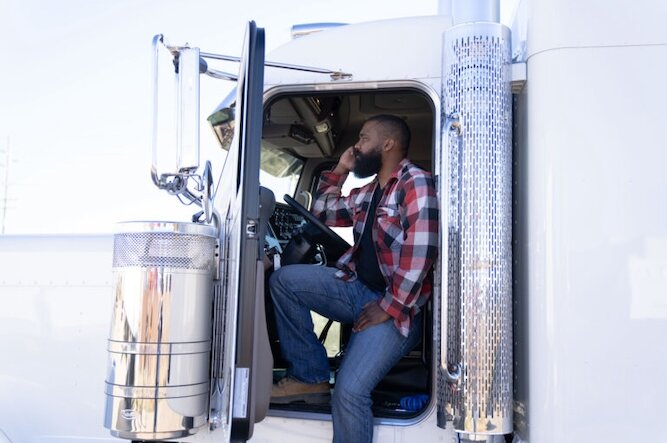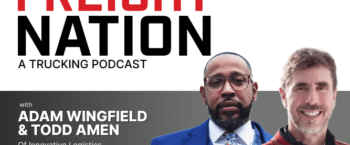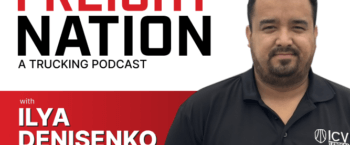Owner-Operator Costs of Doing Business: 11 Essential Expenses

What are you waiting for?
Make more money starting now.
Being an owner-operator offers a flexible schedule and work autonomy, as well as the ability to earn a good living. While driver pay ranges vastly depending on experience, location, availability, and type of loads, all owner-operator expenses should be factored in when calculating your yearly income and your take home pay.
Truck drivers have many different expenses to keep track of on a regular basis. These expenses can make a big difference in the profitability of your trucking business.
Here are the essential owner-operator expenses to calculate your income and accurately improve your profitability.
11 essential owner-operator expenses
While owner-operator expenses can vary depending on your equipment, cargo, routes, and even personal needs, some essential costs apply to all truck drivers. These are 11 key owner-operator expenses to factor in for running a profitable trucking business.
1. Fuel expenses
Fuel is the largest owner-operator expense and often the most difficult to project. However, on average, you can expect to spend between $50,000 and $70,000 each year filling up your truck.
To get a rough estimate of your cost-per-mile, divide your truck’s miles per gallon (MPG) by the current cost per gallon for fuel and then multiply by the number of miles you plan to drive.
Although you may not be able to significantly reduce your fuel expenses, there are some actions you can take to minimize your fuel consumption. When performed in conjunction, you can squeeze out additional profit margins.
Here are the top ways to lower your fuel consumption:
- Make an informed tire purchase – Consider the long-term costs when buying tires. Look for those that deliver excellent traction, long tread life, and rolling resistance which will improve your fuel economy.
- Control your speed – Every five miles per hour (MPH) you drive above 60 MPH is like paying an additional 24 cents per gallon for fuel due to wind resistance and increased tire rolling resistance. Adding a few minutes to your trip can add dollars to your wallet.
- Find your engine’s “sweet spot”– The “sweet spot” is the most efficient revolutions per minute (RPM) to run your engine, which reduces the amount of fuel you burn. A good sweet spot is around 1250 – 1350 RPM.
- Use a fuel card – Fuel cards let you purchase fuel at a discounted price, and the savings add up. Find a card that offers the best savings and benefits for your needs.
- Plan your routes – Make the most of every mile by doing what you can to eliminate deadheads and driving empty miles.
- Negotiate fuel surcharges – With fuel charges in constant flux, negotiating the fuel surcharge with every contract can provide some stability in predicting and covering fuel costs.
2. Truck purchase or lease cost
Your truck payment is one of your top fixed monthly expenses. Some drivers choose to lease or rent their trucks, while others buy one. Regardless of what you decide, you must be sure your monthly income accounts for these payments.
If you own your truck, you’ll no longer need to worry about this monthly cost once it’s paid off. But you will need to consider maintenance and repair costs to extend its lifetime.
3. Truck maintenance and repair
Truck maintenance and repair are going to happen. But if you have a preventative maintenance plan and a rainy day fund to help cover the cost, you will be less likely to take an unexpected hit to your monthly budget. Additionally, you’re required by law to maintain your truck in safe operating condition.
In general, truck maintenance and repair will account for approximately 10% of your overall expenses, including $1,000 to $4,000 for tires each year.
4. Annual licensing, permits, and documentation
Don’t forget to account for your annual licensing and permitting fees. These are set by law and may vary by state. Check with the relevant government authority for current pricing.
These include but are not limited to:
- Business licenses
- Driver’s license renewal fees
- US DOT registration
- Motor Carrier Operating Authority registration
- Unified Carrier Registration
- Vehicle inspections fees
- State transportation permit
- International Fuel Tax Agreement (IFTA) decal
- HVUT fee
5. Insurance expenses
Insurance is essential, yet the specifics can vary widely depending on your choices. Having more coverage leads to higher monthly premiums, while less coverage means taking on more risk.
Owner-operators should weigh two primary types of insurance: truck insurance and health insurance.
Truck insurance
Commercial truck insurance can be complex. You’ll need to carry mandatory minimums, but you can also choose to increase your protection. Take the time to understand the various types of coverage and make an informed decision as to what you need. Also, make sure you understand what’s not covered.
Health insurance
Your work depends on your health. Health insurance should be top of your priority list to ensure you have access to care if and when you need it. Several insurance companies specialize in trucking needs can help guide you to the best plan.
You may need to find coverage for just yourself or your whole family. Regardless, you’ll have a monthly premium. However, since owner-operators are self-employed, you can claim a 100% deduction of your health insurance premiums if your spouse does not have company-offered insurance through their employer. You can visit Healthcare.gov for information about applying for individual health insurance through your state or national insurance exchange.
6. Taxes
Both state and local governments require you to pay taxes.
You can plan on paying the following:
- Self-employment taxes: These taxes are like the Social Security and Medicare taxes paid as a company employee. According to IRS.gov, the self-employment tax rate is 15.3% (12.4% for Social Security and 2.9% for Medicare).
- Federal and state income tax: As an owner-operator, you are responsible for estimating. If you think you’ll owe at least $1,000 after subtracting withholding and credits, you must make estimated quarterly self-employment and income tax payments. These are often made in the range of 20-30% of the net income you earn over the quarter to avoid incurring a tax penalty.
If you think you’ll owe at least $1,000 after subtracting withholding and credits, you must make estimated quarterly self-employment and income tax payments. These are often made in the range of 20-30% of the net income you earn over the quarter to avoid incurring a tax penalty.
Since you are self-employed, you can claim several tax deductions that will save you significantly when it comes to tax time.
7. Food and drink expenses
Food costs can add up quickly on the road, especially if you aren’t planning ahead. Carriers can deduct a portion of your meals on the road from your taxes under a deduction known as per diem, but you’ll still want to keep your food budget reasonably low.
Maintaining healthy eating during trips can help you cut costs and calories. Consider investing in a small refrigerator, travel cooking equipment, and a microwave for your truck rather than exclusively dining out.
8. Broker fees
Freight brokers can match you with more hauls, but their service comes at a price. If you choose to partner with a freight broker or brokers, be sure to vet their services, reputation, and cost properly. Every broker(age) sets its own rates, but in general, you can expect to pay 10% to 20% of the gross margin on each load.
9. Load board subscription
Load boards help maximize your profits by allowing you to quickly find and book loads. A monthly subscription fee is required, and you may want to access more than one to expand your options. Load boards with special features, such as Truckstop’s Load Alert Notifications, help you maximize your time and efficiency, allowing you to get the higher-paying loads you’re looking for. Consider subscription costs and benefits when you tally up your monthly expenses.
10. Factoring expenses
Freight factoring offers an alternative way to maintain a steady cash flow and get you paid faster, which is especially helpful when margins are tight. After you’ve completed a haul, you can submit the invoice to a factoring company for a small fee, allowing them to expedite your payment and handle the collection of the unpaid balances from the broker(s).
The fee for this service typically ranges from 2.5% to 5% per invoice, depending on your business volume. While it involves a cost, the convenience of reducing accounting efforts and chasing invoices often makes it worthwhile.
There are two types of factoring: recourse and non-recourse.
Recourse factoring
In recourse factoring, the factoring service will try to collect on the invoice. However, if they’re unsuccessful, you’re responsible for repaying the factoring service and attempting to collect the debt yourself. Recourse factoring is typically less expensive since the factoring service is assuming less risk.
Non-recourse factoring
Non-recourse factoring costs more up front, but it protects you from chasing down payments you haven’t received. Some factoring services only protect you if the client goes bankrupt, while others will cover the cost of virtually all non-payments. While non-recourse factoring costs more up front, it allows you guaranteed payment without the risk.
11. Transportation management system (TMS) subscription
A transportation management system (TMS), such as the Truckstop ITS Dispatch, dramatically reduces the amount of manual paperwork on your end For a small monthly fee, you’ll be able to automate most of your processing, from single-click invoices to detailed customer agreements to International Fuel Tax Agreement (IFTA) reporting. You’ll also gain real time visibility with detailed reports to help you make smarter business decisions like optimizing your route and your operational processes.
Being an owner-operator in the trucking business requires considering essential expenses to increase profitability. These expenses include fuel costs, maintenance and repairs, insurance, permits and licenses, taxes, and other business expenses. By wisely tracking and managing these expenses, owner-operators can optimize operations, reduce costs, and pave the way for long-term success.
Get paid when you need it.
Want to get paid faster and worry less about your cash flow? Try Truckstop Factoring. It’s easy: haul your load, send in your paperwork, and get paid within 24 hours of verifying your invoice. Simple as that! Say goodbye to stress and hello to faster payments. Freight factoring gets you paid faster with less risk, so you can focus on hauling freight. Get started today!

Find out how our platform gives you the visibility you need to get more done.
Get helpful content delivered to your inbox.
Schedule a demo.
Find out how our platform gives you the visibility you need to get more done.





